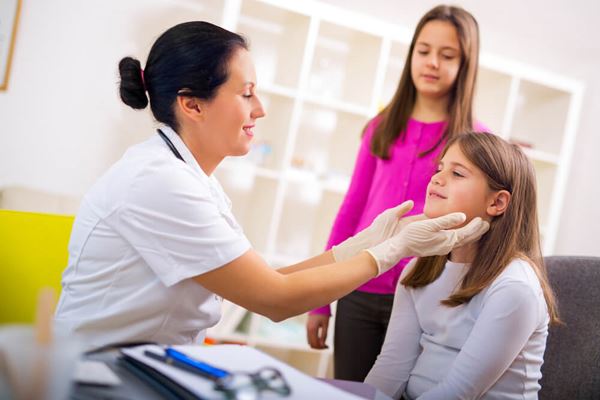As a parent, you’ve probably heard of meningitis. But, how much do you really know about the bacteria that causes it?
What is meningococcal disease?
Meningococcal infections can be known by different names, depending on where the bacteria are in the body.
Meningococcal meningitis - makes up 50% of meningitis disease
This infection causes inflammation of the lining of the brain and/or spinal cord. In most cases, it follows a cold or a sore throat, but it can also come on suddenly. Signs and symptoms in older children and adults include:
- High fever
- Severe stiff neck or neck pain
- Body aches
- Nausea and vomiting
- Skin rash
- Mental confusion
Babies and toddlers have an increased risk of contracting meningococcal disease, so any sudden high fever should be watched closely. Other signs of illness may include:
- Refusing to eat
- Vomiting
- Irritability
- Sudden jerking of the arms or legs
- A bulge in baby’s head at the soft spot
- High-pitched crying
Meningococcal septicemia - makes up 35-40% of meningitis disease
Septicemia is an infection of the blood and, in this case, usually happens when meningitis goes untreated and the bacteria spread to the bloodstream. Symptoms commonly include a sudden onset of fever and chills, fatigue, nausea and vomiting, diarrhea,cold hands and feet, muscle aches and limb pain. Some cases may produce a pink to dark purple skin rash. Septicemia is a medical emergency.
How is meningococcal disease spread?
The disease is spread through contact with a sick person or through droplets in the air (such as when the person coughs or sneezes). The disease can also spread through household contact like sharing drinks, physical contact like kissing and contact that may occur during sleepovers and parties. Bacteria collect inside the nose, where they can spread to the sinus cavities and then be transported in the blood to the brain or spinal cord. Young children are at highest risk, although the risk among college students has grown dramatically in recent years, probably due to dormitory living arrangements.
Prevention and treatment
The best prevention is the vaccine commonly given to children between the ages of 10-25. A vaccine may be available for younger children in high-risk populations. Younger children will receive two doses of the vaccine, children between 10-25 will receive one dose with the possibility of a booster every five years. If you think your child might be infected, it’s critically important to get medical attention right away. Treatment involves I.V. antibiotics and fluids, and family members can be given a special type of antibiotic to keep them from getting sick
Speak with your pediatrician about the meningitis vaccine, when your child should have it or if they need of a booster. If you need a pediatrician, call 1-800-BayCare or find a doctor near you.



